Dahlias kind of blow my mind. Some of them look absolutely fake. There’s no way a flower that intricate and colorful could possibly be real, right?
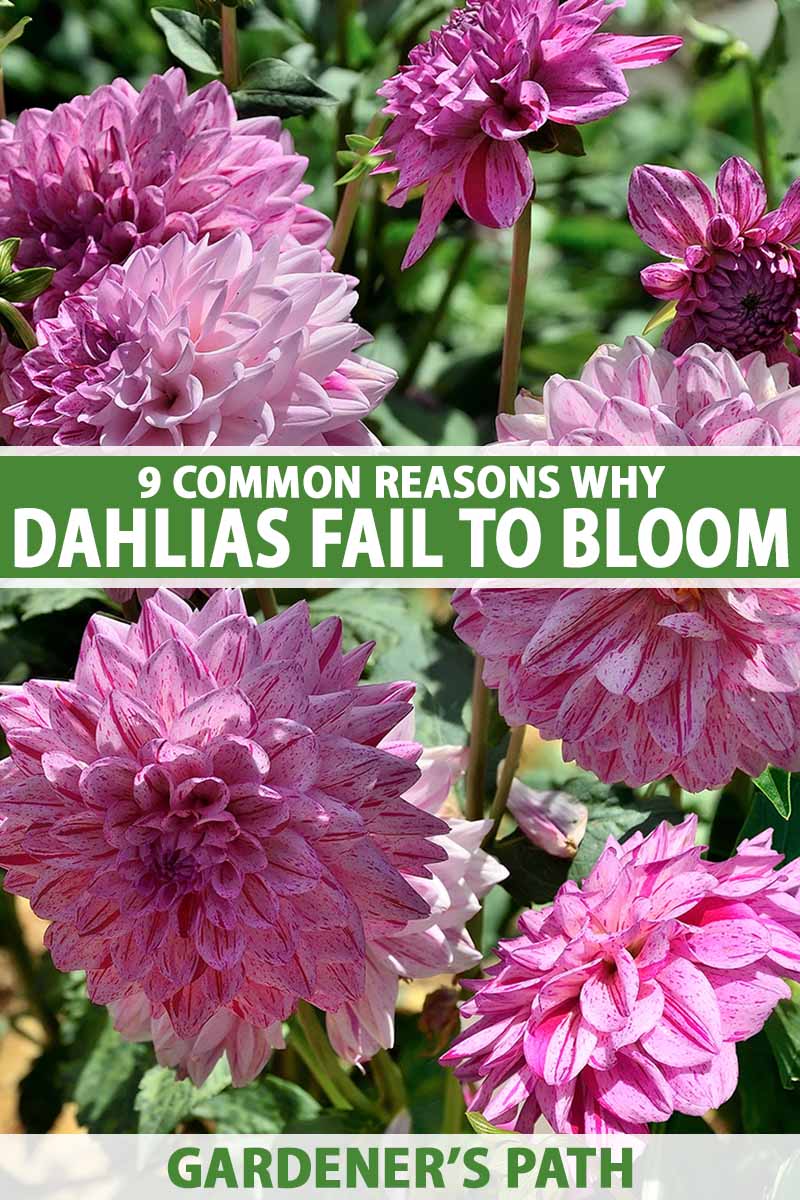
We link to vendors to help you find relevant products. If you buy from one of our links, we may earn a commission.
Dahlia plants are actually pretty reliable, and they bloom readily.
You usually just need to nail the basics like water, sun, and food. Of course, there are a few other things that might prevent flowering that aren’t as easy to avoid.
This article can help with basic dahlia cultivation if you’re a beginner.
We’ll talk about all the common issues that might deny you those iconic blossoms in this guide. And we’ll also discuss what you can do about it. Here’s the list:
9 Causes of Dahlia Bloom Failure
Most problems that can cause a lack of blossoms are related to growing conditions like moisture, sunlight, and soil nutrition.
If you do your best to keep your plants happy and well cared for, you can avoid most of these issues.

The first time I tried to grow dahlias, about half didn’t flower at all. I thought to myself, “See? I knew it. Too good to be true.”
It turns out I just didn’t know what the heck I was doing.
Of course, we all make mistakes from time to time when we’re gardening, and things inevitably go wrong.
Let’s take a look at the things that can cause your plants not to bloom and what to do about it.
1. Cyclamen Mites
Cyclamen mites (Phytonemus pallidus) are microscopic mites that feed on many ornamentals, such as azaleas and dahlias.
You can’t see the mites themselves with the naked eye, but the damage they cause is pretty obvious. They cause the internodes, which are the stems between the leaves or flowers, to be extremely short.
On top of that, the plant won’t flower. If there are any flower buds when the mites first infest the plant, they’ll become wrinkled, twisted, and distorted.
Once a plant is infested, there isn’t much you can do about it. You can hire professional services to apply commercial miticides, but it’s probably best to just pull the plants and bag and toss them in the trash, or burn them.
Avoid planting dahlias or other host plants in that area for a year to kill the existing mites by denying them a host.
You can learn more about other types of dahlia pests in our guide.
2. Dry Conditions
Dahlias are fast growers. That means they need lots of water to maintain good health and to bloom.
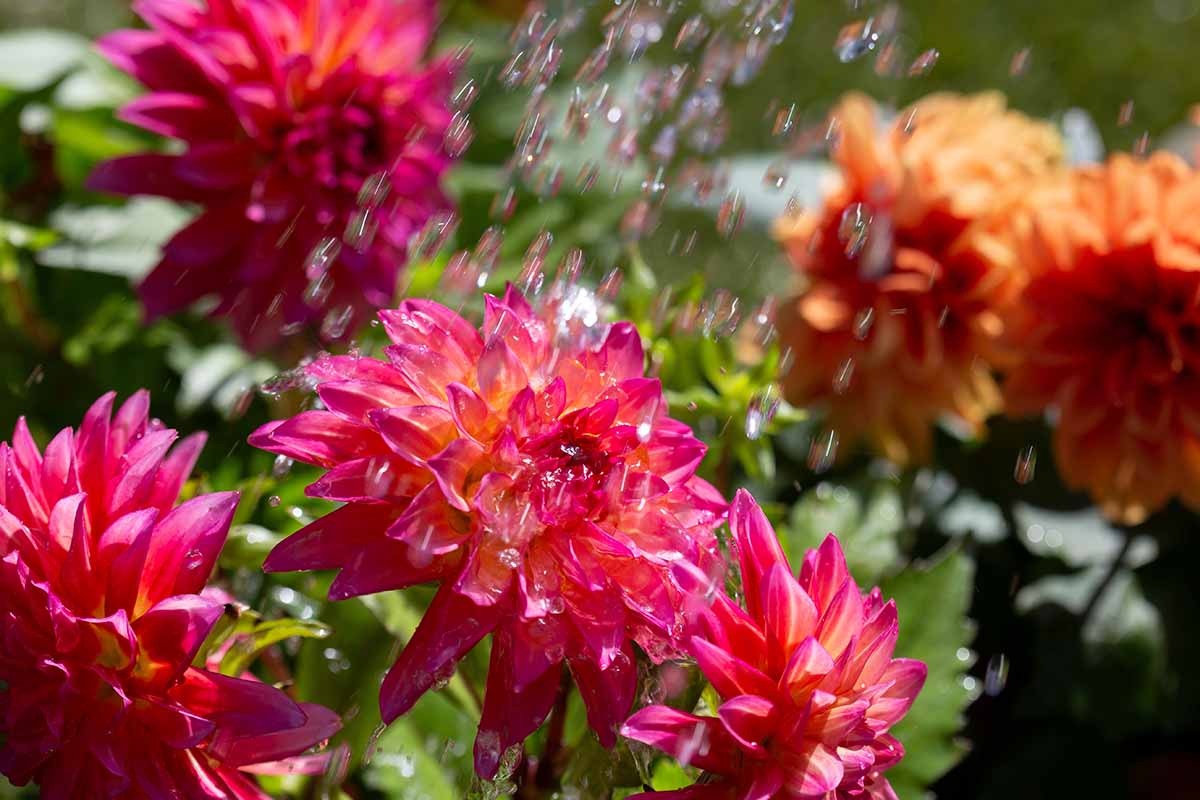
On top of that, the tubers can grow deep. These aren’t plants with shallow roots. That means that if you’re watering frequently and shallowly, the roots won’t be getting the moisture they need.
To keep dahlias happy, they need to be watered deeply. The top inch of soil should be allowed to dry out before you add more water, and then water deep and long.
Soaker hoses or raindrip systems usually don’t water deeply enough.
These types of hoses generally provide a drizzle of water for a short amount of time each day or every other day, depending on how you program them.
They’re perfect for plants that need constant surface moisture, but they’re not ideal for those that require deep, infrequent watering.
You’ll need to use a standard garden hose or something that can soak deep.
This might mean manually watering once or twice a week in the morning when you can stand there and allow the water to stream at the base of the plant for a full minute or two.
If you stick your finger into the soil after watering for a few minutes, it should feel wet but not muddy as far as you can insert your finger.
You can learn more about how to water dahlias in our guide.
3. Foliar Nematodes
You’d think from the name that these microscopic parasitic worms in the Aphelenchoides genus would stick with the foliage, but the damage they can cause extends throughout the entire plant.
When they’re present, they cause the foliage to turn yellow and die before falling off the plant. But they also cause the flower buds to be malformed as they develop, to the point where they might never open at all.
The damage starts at the bottom of the plant and gradually moves up, so you’ll definitely see other damage on the plant first, rather than just the missing flowers.
Since these pests need moisture to move and reproduce, limiting the presence of any water on the foliage is crucial for limiting this problem.
That means keeping your dahlias well-spaced so they dry out quickly and watering at the soil level, not on the leaves themselves.
If nematodes are present, you’ll need to dig up the plant and dispose of it. There’s nothing you can do to get rid of them.
4. Lack of Nutrients
In addition to being thirsty plants, dahlias are hungry, too. Generally, these heavy feeders need feeding once per month with a low-nitrogen fertilizer.
Of course, you really should test your soil if you want to formulate an ideal feeding schedule.
For instance, if your soil is high in phosphorus, you don’t want to be adding more. Or, if your soil is extremely deficient in potassium, a mild fertilizer isn’t going to cut it.
Absent a soil test, feed with a 5-10-10 NPK fertilizer starting 30 days after planting or after the leaves first emerge in the spring and every 30 days after that.
5. Late Bloomers
If some of your dahlias are blooming but not others, take note of the specific type and cultivar. Some just bloom later in the year than others.
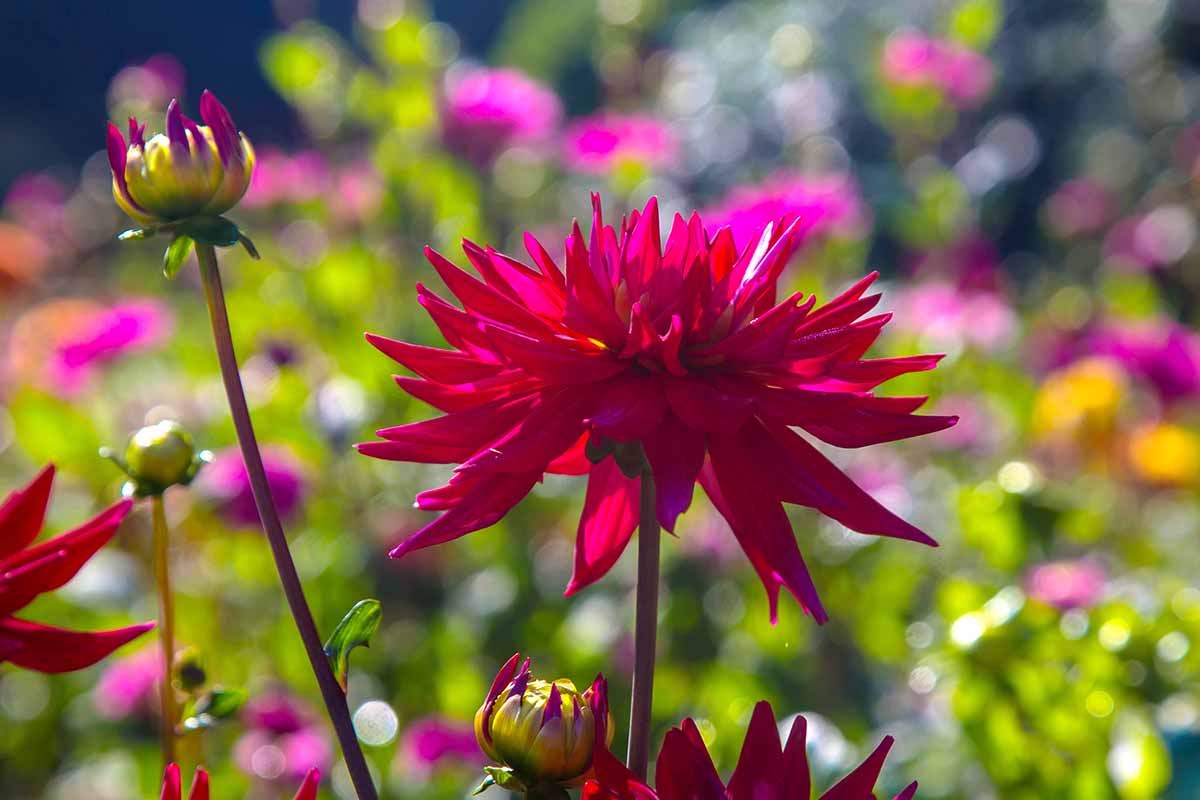
Bloom timing is also dependent on your climate, the amount of food and water the plants received, and how established they are.
Most dahlias start blooming by July, but some wait until August. They need up to 120 days from planting to start blooming, but some are ready in just 90 days.
Dinnerplate types like ‘Cafe Au Lait’ and ‘Shiloh Noelle’ usually won’t start popping until late August, while ball types are blooming by July.
So, if your ‘Arabian Night’ is in full bloom but your ‘Labyrinth’ is still bare, fear not. Just give the plant more time.
Check out our guide to dahlia classification for more information about the different types.
6. Mosaic Virus
Mosaic viruses are various viral pathogens that can infect dahlias. These include dahlia mosaic virus (DMV), dahlia common mosaic virus (DCMV), tomato spotted wilt virus (TSWV), and impatiens necrotic spot virus (NSV).
These viruses can cause strange and varied symptoms, and even two infected plants in the same garden might have entirely different symptoms.
Sometimes the symptoms appear as chlorotic spots on the leaves or stunted growth, and sometimes new growth emerges distorted or deformed.
When this new growth is the flower buds, they might be deformed to the point where they never completely develop or open.
If you see strange yellow spots or patterns on the leaves along with a lack of blossoms, suspect mosaic virus.
Sadly, there’s nothing you can do about this disease other than to pull the plants and start over.
Learn more about dahlia mosaic virus in our guide.
7. Not Enough Sunlight
If your dahlias are receiving fewer than six hours of sun per day, it’s entirely possible that they aren’t receiving enough light to produce flowers.

I have some roses that bloom in much shadier conditions than the plants prefer, but dahlias aren’t adaptable like that. Without enough light, they will NOT bloom.
If you can’t prune nearby trees or shrubs to create more light exposure, you might want to consider moving the plants to a different location next spring.
8. Powdery Mildew
I have a love/hate relationship with powdery mildew. Well, actually, it’s mostly a hate relationship, but I love that it’s so easy to identify this disease.
You are rarely left wondering what is going on and if you’re treating your plants for the right disease.
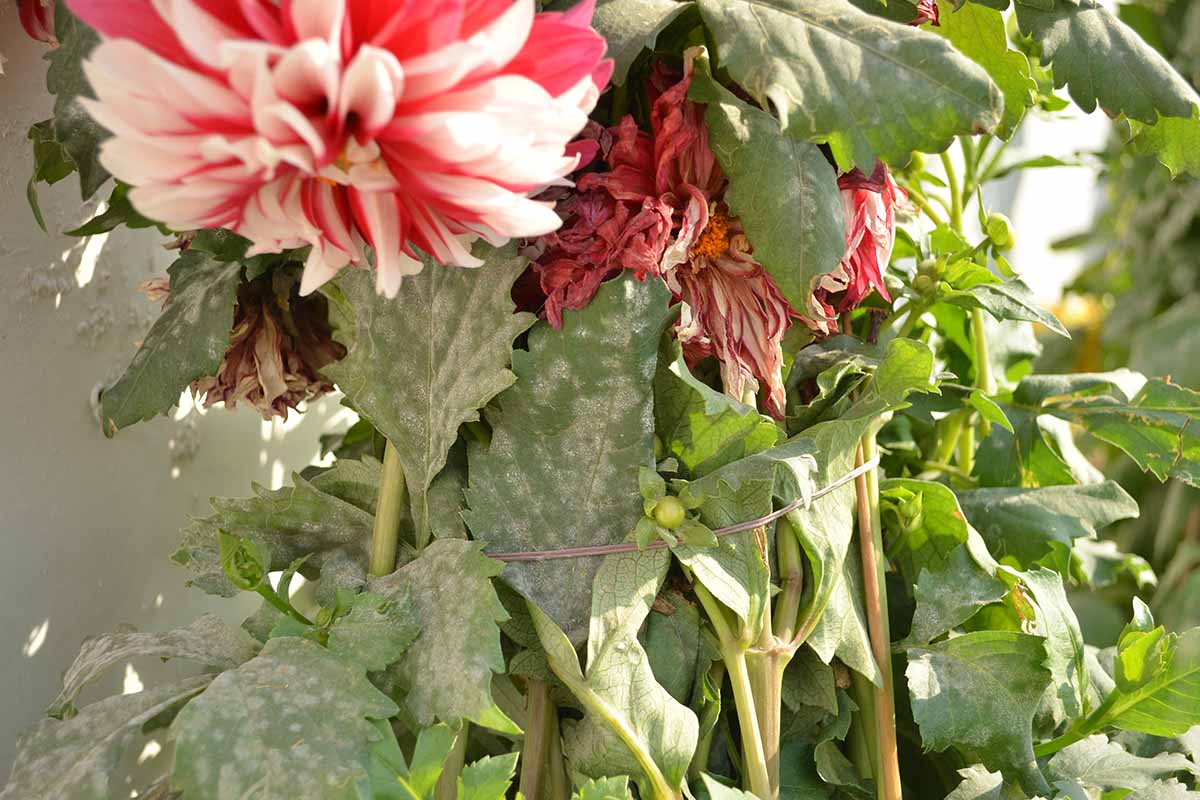
Powdery mildew just looks like someone went to town dumping flour on your plant, but it’s actually white fungal growth caused by the pathogen Golovinomyces cichoracearum (formerly Erysiphe cichoracearum).
Most of the time, it’s primarily a cosmetic issue. But every so often, especially when there’s high humidity, temperatures between 68 and 86°F, and cloudy days, it can become a serious problem.
When it attacks plants before they’ve started blooming, a serious infection can cause the blossoms to fail to form.
Controlling powdery mildew works much better if you catch it early. If the disease is allowed to progress too far, you might only be able to reduce the symptoms, at best.
To learn about the life cycle of this fungus and methods of control for powdery mildew, check out our comprehensive guide.
9. Too Much Nitrogen
Nitrogen encourages plants to develop lots of foliage, but that comes at the expense of blossoms.
While dahlias are heavy feeders and they need regular applications of fertilizer, if you apply a fertilizer with a high ratio of nitrogen, it’s possible to add too much to the soil for the plant to use.
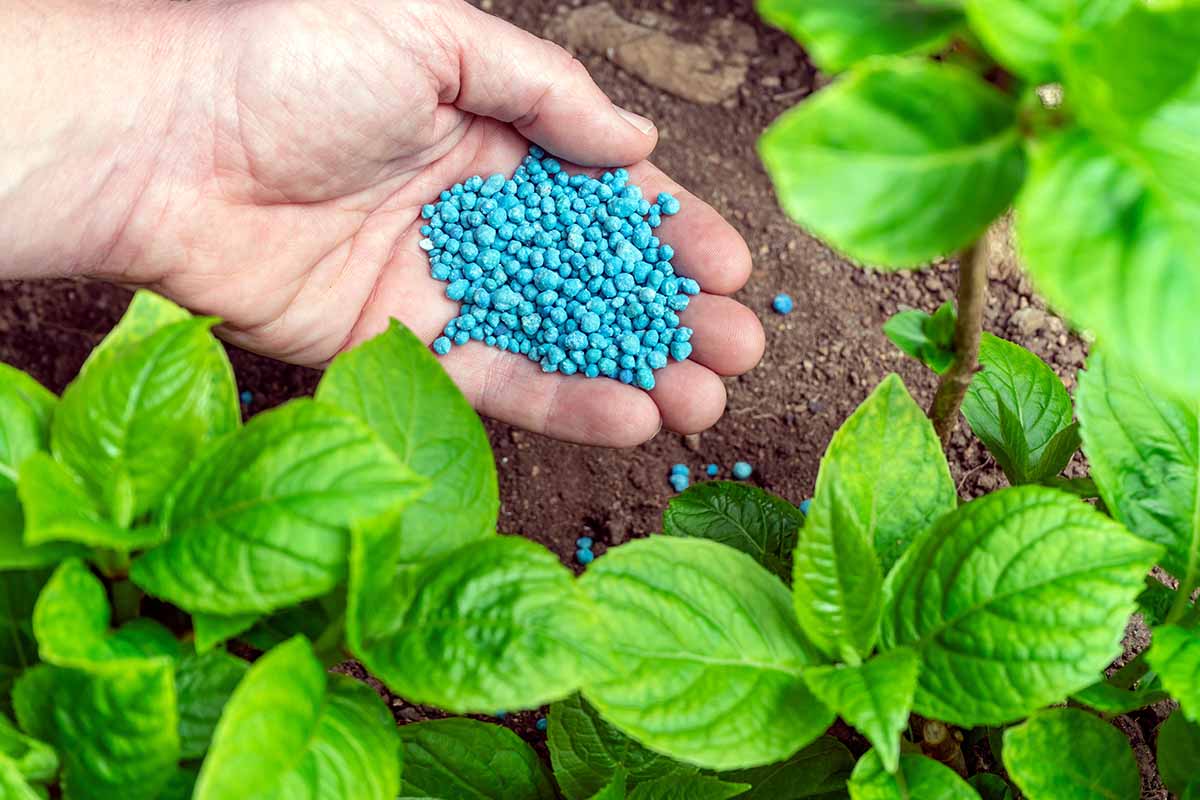
Similarly, if your soil is naturally high in nitrogen and you add fertilizer that contains nitrogen, you could be providing too much.
If nothing else seems to fit the bill, it’s entirely possible that too much nitrogen is causing the problem. Once again, get yourself a soil test, and avoid overfeeding for the best blooms.
Your Dahlias Are Ready for a Comeback
Since so many of us have to grow our dahlias as annuals, you have to act fast to fix the problem if you still want to see blossoms.
Those who live in warm climates or who lift and store their tubers might miss out on this year’s display.
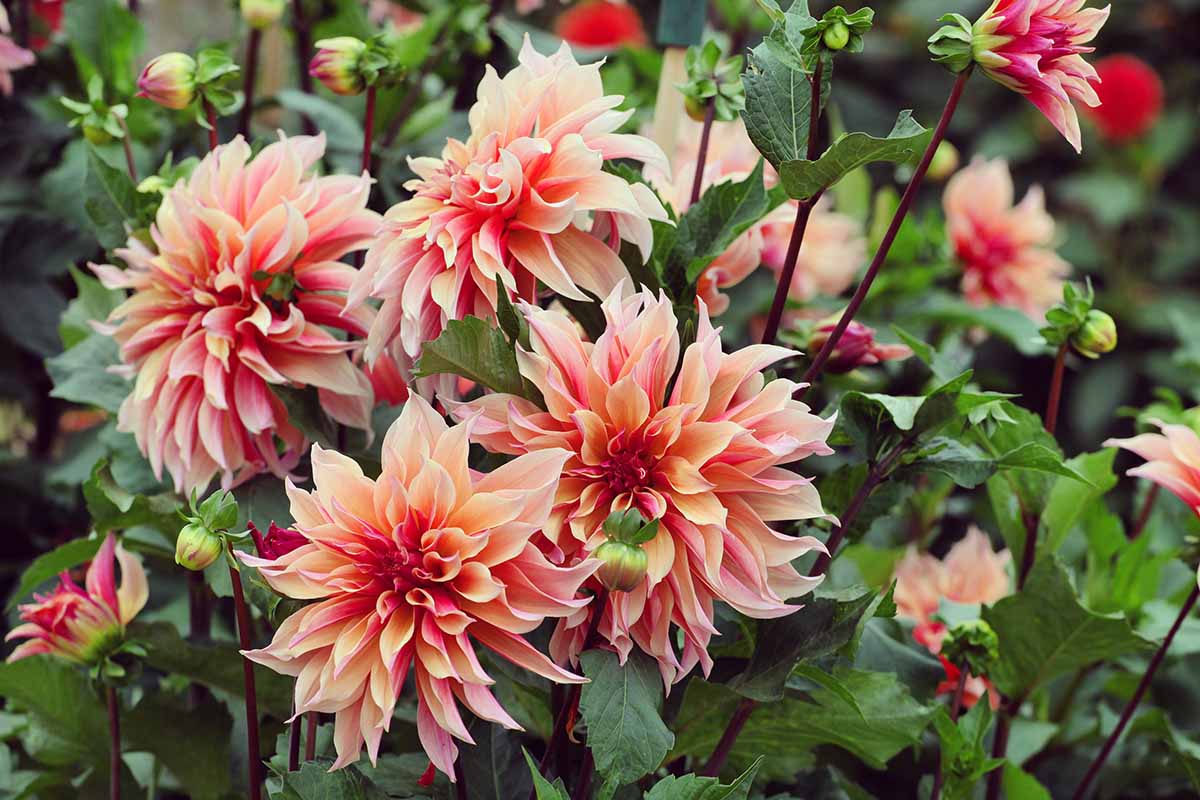
Sadly, some of these causes can’t be resolved, even with all the time in the world. But many of them can. Act fast, and you can enjoy those blooms.
What issue are you dealing with? How are you resolving it? Are you running into trouble? Check in with us in the comments.
Your dahlia-growing journey doesn’t end here. There’s so much more to know and do! Ready to learn more? Check these articles out next:
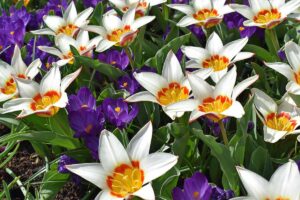


Thank you that’s really handy!! I’ve had hardly any blooms on my dahlias this year ☹️. Just my second year growing them, and I think some of the above might apply. But I think the main issue with mine is that I’ve put them in too windy a spot in my garden, seems like they prefer more shelter 🤷♀️
Hi Fiona, it could be. Tall types are definitely stressed by too much wind and need staking. Short types shouldn’t be too impacted by some wind. I will say that when I plant new tubers, it takes them a few years to really bloom prolifically.